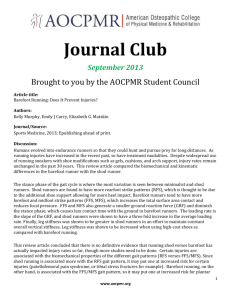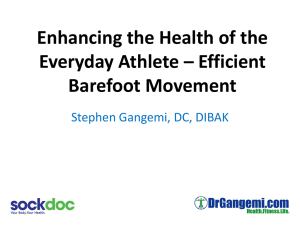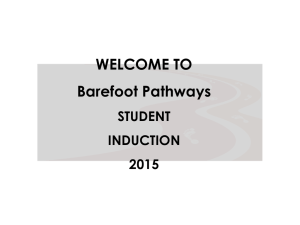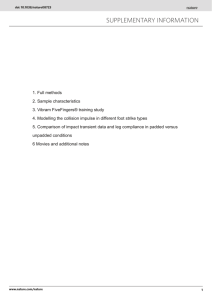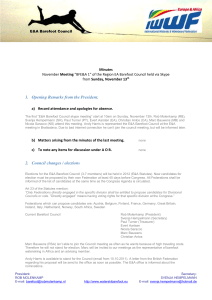Comparing foot-strike patterns and kinetics
advertisement
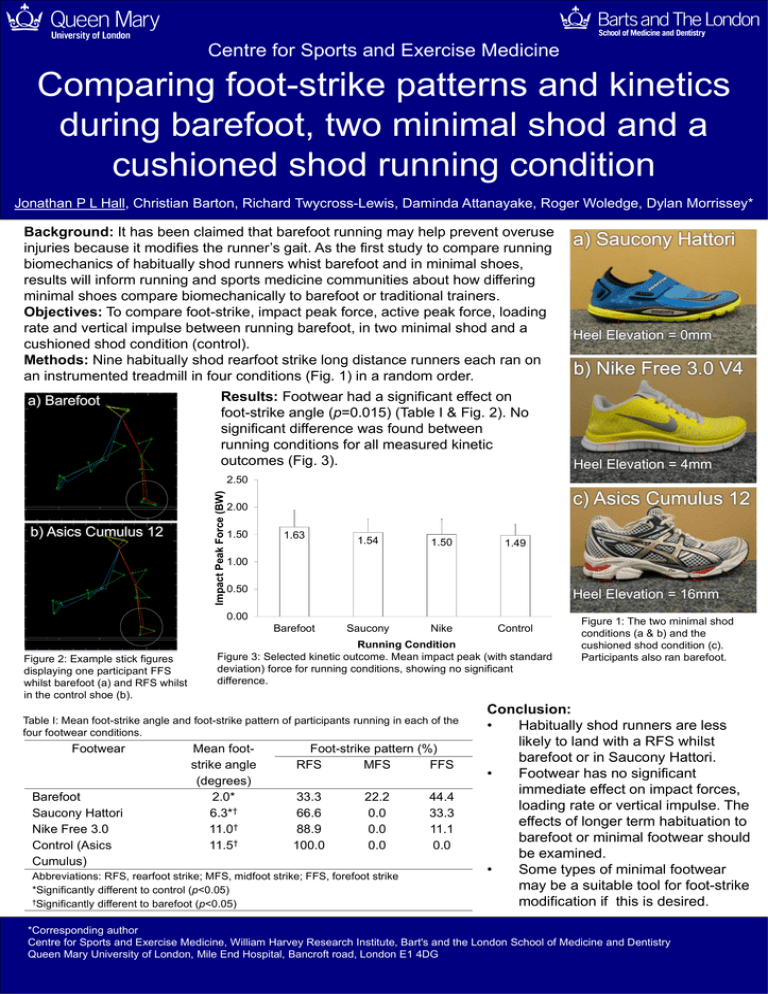
Centre for Sports and Exercise Medicine Comparing foot-strike patterns and kinetics during barefoot, two minimal shod and a cushioned shod running condition Jonathan P L Hall, Christian Barton, Richard Twycross-Lewis, Daminda Attanayake, Roger Woledge, Dylan Morrissey* Background: It has been claimed that barefoot running may help prevent overuse injuries because it modifies the runner’s gait. As the first study to compare running biomechanics of habitually shod runners whist barefoot and in minimal shoes, results will inform running and sports medicine communities about how differing minimal shoes compare biomechanically to barefoot or traditional trainers. Objectives: To compare foot-strike, impact peak force, active peak force, loading rate and vertical impulse between running barefoot, in two minimal shod and a cushioned shod condition (control). Methods: Nine habitually shod rearfoot strike long distance runners each ran on an instrumented treadmill in four conditions (Fig. 1) in a random order. a) Barefoot Results: Footwear had a significant effect on foot-strike angle (p=0.015) (Table I & Fig. 2). No significant difference was found between running conditions for all measured kinetic outcomes (Fig. 3). a) Saucony Hattori Heel Elevation = 0mm b) Nike Free 3.0 V4 Heel Elevation = 4mm b) Asics Cumulus 12 Impact Peak Force (BW) 2.50 c) Asics Cumulus 12 2.00 1.50 1.63 1.54 1.50 1.49 1.00 0.50 Heel Elevation = 16mm 0.00 Barefoot Figure 2: Example stick figures displaying one participant FFS whilst barefoot (a) and RFS whilst in the control shoe (b). Saucony Nike Running Condition Figure 3: Selected kinetic outcome. Mean impact peak (with standard deviation) force for running conditions, showing no significant difference. Table I: Mean foot-strike angle and foot-strike pattern of participants running in each of the four footwear conditions. Footwear Barefoot Saucony Hattori Nike Free 3.0 Control (Asics Cumulus) Control Mean footstrike angle (degrees) 2.0* 6.3*† 11.0† 11.5† Foot-strike pattern (%) RFS MFS FFS 33.3 66.6 88.9 100.0 22.2 0.0 0.0 0.0 Abbreviations: RFS, rearfoot strike; MFS, midfoot strike; FFS, forefoot strike *Significantly different to control (p<0.05) †Significantly different to barefoot (p<0.05) 44.4 33.3 11.1 0.0 Figure 1: The two minimal shod conditions (a & b) and the cushioned shod condition (c). Participants also ran barefoot. Conclusion: • Habitually shod runners are less likely to land with a RFS whilst barefoot or in Saucony Hattori. • Footwear has no significant immediate effect on impact forces, loading rate or vertical impulse. The effects of longer term habituation to barefoot or minimal footwear should be examined. • Some types of minimal footwear may be a suitable tool for foot-strike modification if this is desired. *Corresponding author Centre for Sports and Exercise Medicine, William Harvey Research Institute, Bart's and the London School of Medicine and Dentistry Queen Mary University of London, Mile End Hospital, Bancroft road, London E1 4DG
